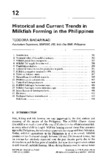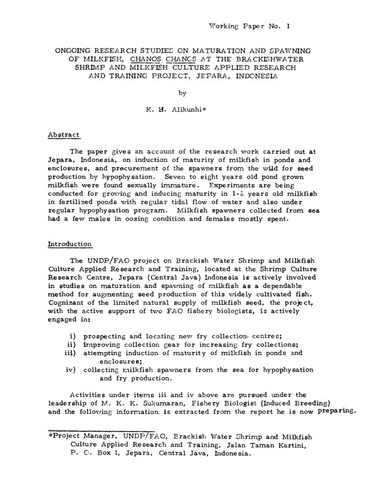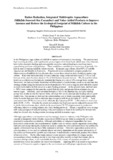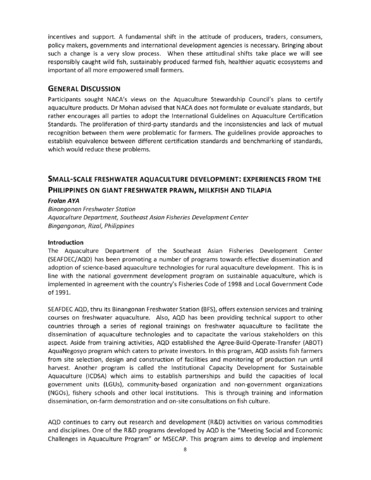Historical and current trends in milkfish farming in the Philippines
Share
Abstract
This chapter focuses on the historical and current practices of milkfish farming in the Philippines. The Philippines ranks among the top 12 largest fish producers in the world and the milkfish, Chanos chanos, is the official national fish. The milkfish production in the Philippines has fluctuated sharply, but on average, has relatively stagnated over the past decade, partly due to the shrimp boom and low price of milkfish. The milkfish industry has been responsible for the significant loss of valuable mangrove swamps and forests. The loss of mangrove means loss of habitats and biodiversity including nursery grounds for feeding and refuge of commercial fishes, shrimps, crabs and mollusks. Milkfish ponds in the Philippines are either privately owned or leased from the government. Brackish water fish ponds are valuable real estate and good management adds to their value. For milkfish farming, stocking rate should be based on the pond environment and carrying capacity, and the fish size at stocking and the market size desired.
Suggested Citation
Bagarinao, T. (1998). Historical and current trends in milkfish farming in the Philippines. In S. S. de Silva (Ed.), Tropical Mariculture (pp. 381-422). London: Academic Press.
Subject
Taxonomic term
Collections
Related items
Showing items related by title, author, creator and subject.
-
Ongoing research studies on maturation and spawning of milkfish, Chanos chanos at the brackishwater shrimp and milkfish culture applied research and training project, Jepara, Indonesia
Alikunhi, K. H. (Aquaculture Department, Southeast Asian Fisheries Development Center, 1976)The paper gives an account of the research work carried out at Jepara, Indonesia, on induction of maturity of milkfish in ponds and enclosures, and procurement of the spawners from the wild for seed production by hypophysation. ... -
Ration reduction, integrated multitrophic aquaculture (milkfish-seaweed-sea cucumber) and value-added products to improve incomes and reduce the ecological footprint of milkfish culture in the Philippines
de Jesus-Ayson, Evelyn Grace T.; Borski, Russel J. (AquaFish Collaborative Research Support Program, Oregon State University, 2012)In the Philippines, cage culture of milkfish in marine environments is increasing. The practice uses high stocking densities, with significantly greater inputs of artificial feeds which more often than not, have led to ... -
Small-scale freshwater aquaculture development: Experiences from the Philippines on giant freshwater prawn, milkfish and tilapia
Aya, Frolan (Japan International Cooperation Agency, 2013-12)The Aquaculture Department of the Southeast Asian Fisheries Development Center (SEAFDEC/AQD) has been promoting a number of programs towards effective dissemination and adoption of science-based aquaculture technologies ...






